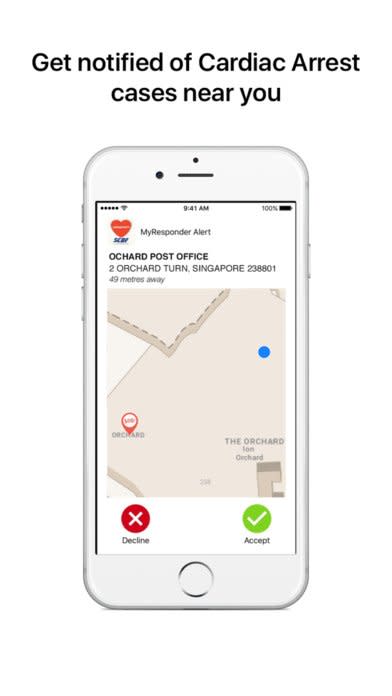Singapore’s ‘Uber of lifesaving’ app is a simple way to stop people from dying on the street

A street in Singapore.
If you have a heart attack on a plane, chances are decently good that a doctor or nurse onboard can provide emergency services while you wait to land. But if you collapse on a crowded city street, you might have to wait awhile for an ambulance to arrive.
Singapore’s solution: bring the plane treatment model to the streets by crowdsourcing medical help from whoever happens to be nearby.
The city-state’s population is rapidly aging, and that’s led to an uptick in the number of calls for emergency services. Getting ambulances through clogged city streets to people in need of care within 10 minutes — the approximate amount of time someone in cardiac arrest has before their prospects of survival dim —is a struggle.
A few years ago, Singapore’s Civil Defense Force (which run the public ambulance system) started testing a solution called myResponder. It’s essentially the app version of a flight attendant saying, “Is there a doctor onboard?”
When someone calls 995 (the equivalent of 911), their call is geolocated and a notification is sent out to anyone nearby who has downloaded the app. Once someone gets a notification, they can choose whether or not to accept the call for help. The app also shows the location of any nearby defibrillator machines.
The app launched in 2015. Since then, more than 15,000 medical professionals have downloaded it. That might not sound like a lot, but 2,493 medical cases have gone through the app — and having thousands of people instantly ready to help out in a country that’s smaller in size than New York City is a big deal.

MyResponder
The first person to save a patient with CPR after getting pinged by myResponder was awarded a medal, according to Chan Cheow Hoe, Singapore’s chief information officer and deputy chief executive of the Government Technology Agency.
“After that happened, more and more people realized how important [the app] is,” Hoe tells Business Insider.
A similar app, also hooked up to emergency call centers, is available in the US. The PulsePoint app is used by over 1,000 fire and EMS agencies throughout the country. It’s not available everywhere, however.
“This is almost like the Uber of lifesaving,” Hoe says. “Ultimately we are using an app to mobilize real resources.”
NOW WATCH: 16 keyboard shortcuts only Mac power users know about
Please enable Javascript to watch this video
The post Singapore’s ‘Uber of lifesaving’ app is a simple way to stop people from dying on the street appeared first on Business Insider.

 Yahoo Finance
Yahoo Finance 
